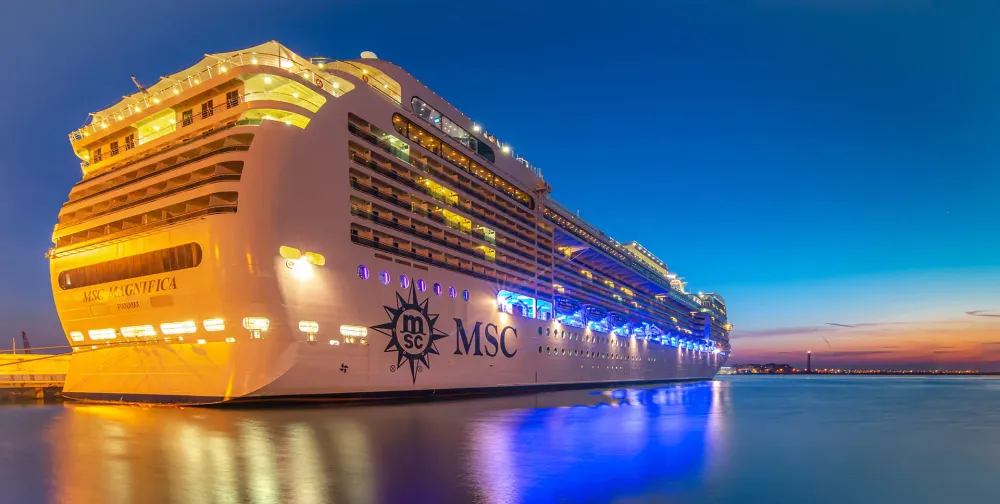17 Destinations Where Cruise Passengers Outnumber Locals
Cruises evoke strong opinions. Many criticize them for contributing to overtourism without significantly benefiting local economies and for their environmental impact. Recently, the backlash against sea holidays has been fierce. Cities such as Venice, Amsterdam, Barcelona, Dubrovnik, Bruges, Mallorca, Maine, Florida, California, and Alaska have all taken steps to limit cruise visitors. This month, the Greek PM hinted at plans to restrict cruise traffic, with Santorini and Mykonos first in line for controls. Often, critics use emotive language; one councilor in Barcelona likened cruise tourists to "a plague of locusts."
Despite this, the cruise industry is thriving. A record 31.7 million people cruised in 2023, with projections reaching 39.5 million by 2027. The world's largest cruise ship, the 7,600-capacity Icon of the Seas, was launched in January, and 16 of the 25 largest vessels have debuted in the past four years.
So, despite being shunned by some European and North American destinations, cruise ships will likely remain a significant part of the travel scene for years to come. While cities like Venice may have grown weary of cruising, other destinations are eager to welcome them.
Reports this week highlighted Trieste's tourism growth, partially due to cruise lines relocating from Venice. In the Caribbean, there is little desire to curb cruises. Amsterdam announced plans for a cruise ban last year, despite hosting around 300,000 passengers annually, a mere one percent of its total visitors. In contrast, Cozumel, Mexico, a port with 80,000 residents, welcomes over four million cruisers annually and is still growing.
So, which are the world's most crowded cruise terminals? Where do Venice and Barcelona rank? And which countries receive the most cruise passengers per capita?
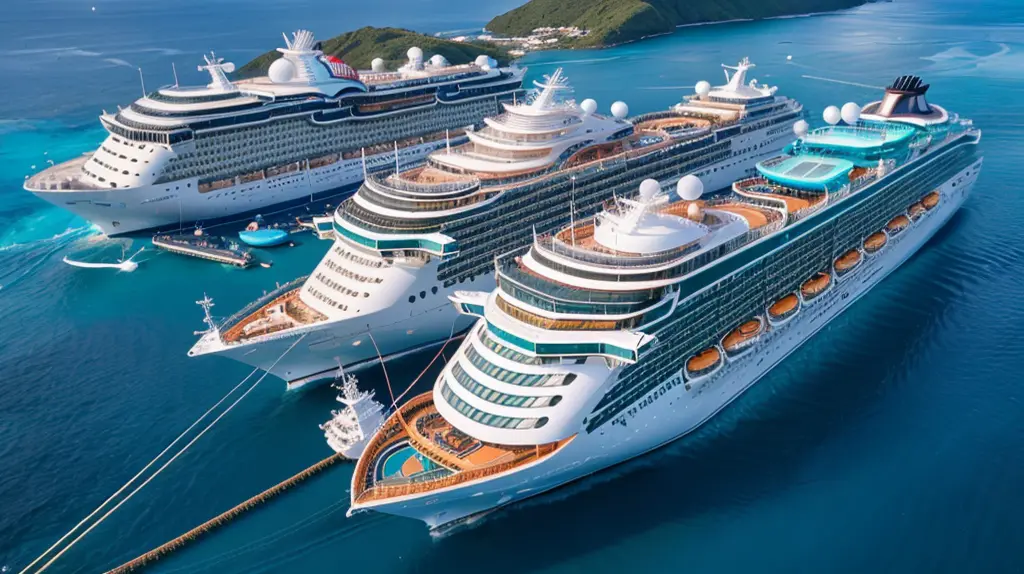
The countries with the most cruise passengers
While Europe's coastal cities might feel the strain, the Caribbean remains the largest region for cruising, with around a third of all passengers, compared to about 20 percent in the Mediterranean.
The Bahamas stands out. Its proximity to Florida makes it a frequent stop for cruises from major hubs like Miami, Orlando, and Fort Lauderdale. In 2022, around 5.4 million cruise passengers visited the Bahamas on day trips, the most recent year for which the UNWTO has statistics. With a population of just 400,000, this equates to 13.5 cruise passengers per resident. By comparison, only 1.5 million arrived by air.

The UNWTO lacks data for every country, with the US, UK, Italy, and France being notable omissions. However, among those providing statistics, only Mexico surpasses the Bahamas with nearly 7.1 million cruise visitors. It is another favorite for ships departing from Florida, with Cozumel appearing on countless itineraries. Rounding out the top five are Spain, Greece, and the Dominican Republic.
In terms of cruise arrivals per capita, Sint Maarten leads. With a population of just 42,000, it welcomes an impressive 844,000 cruise passengers annually, equating to 20.1 per resident.

Cruise arrivals surpass local populations in 16 other destinations, including Bermuda, St. Lucia, Belize, and Barbados.
The cruise capitals of the world
Three of the six busiest cruise ports are in the same US state. The Port of Miami handled 7.3 million passengers in 2023, up from around 5 million in 2016. Port Canaveral near Orlando managed 6.9 million, while Port Everglades in Fort Lauderdale saw just over 3 million embark on voyages. Floridians have a strong affinity for cruises. Cozumel and Nassau, due to their proximity to Florida, and Civitavecchia (the port for Rome) complete the top five.
Efforts to curb cruising in Europe are evident. Barcelona welcomed 3.14 million passengers in 2019, but this dropped to 2.32 million in 2023, with potential further declines if the southern cruise terminal closes. Venice's cruise arrivals fell from 1.43 million in 2017 to just 497,000 in 2023, now representing only about 2.5 percent of the city’s 20 million annual visitors. Dubrovnik saw a decrease from around 750,000 to 550,000 over the same period.
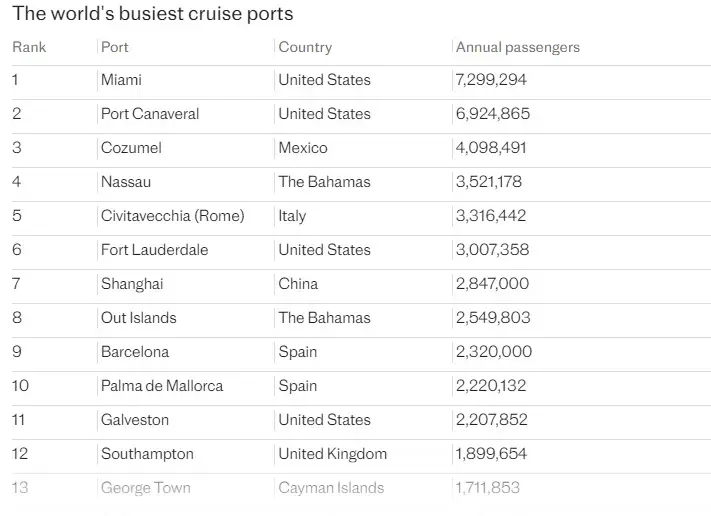
This shift has elevated lesser-known ports. Besides Cozumel, now the third busiest cruise port globally, Mexico's Mahahual and Ensenada have entered the top 50. Roatan in Honduras, a significant destination for cruisers, welcomes over 1 million passengers annually. In South Korea, Jeju receives 1.2 million cruise visitors each year.
Where do the world’s cruise passengers come from?
As the data shows, Americans are the most enthusiastic cruisers, accounting for nearly half of all passengers.
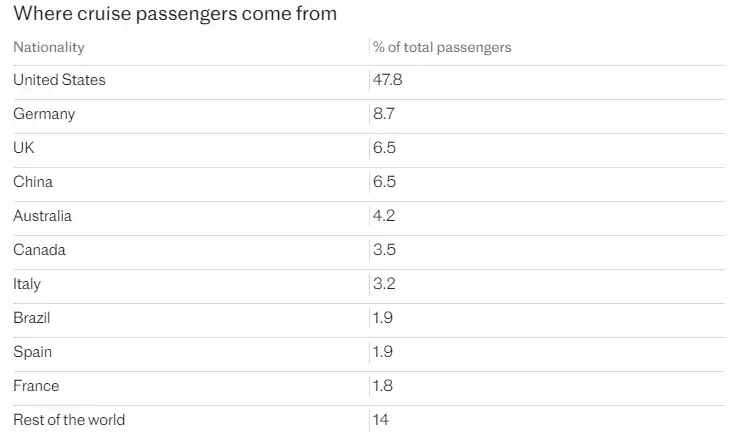
In Europe, the largest source markets are Germany and the UK, followed by Italy, France, and Spain. The number of Chinese cruise passengers is rapidly increasing, now matching the UK and Germany as the third largest market, though still far behind the US.
Do cruise ships bring in much money?
Critics argue that cruise holidays bring minimal economic benefit to local economies. They claim passengers eat, drink, and shop on board, spend only a few hours ashore, and move on, thus not significantly benefiting local businesses.
There is some truth to this, as passengers with meals and entertainment included in their fares may prefer not to spend much ashore. A 2013 study by a University of Bergen professor suggested that of the 60-80 percent of passengers who disembark, the average spend is around NOK 250 per person (approximately £18.50).
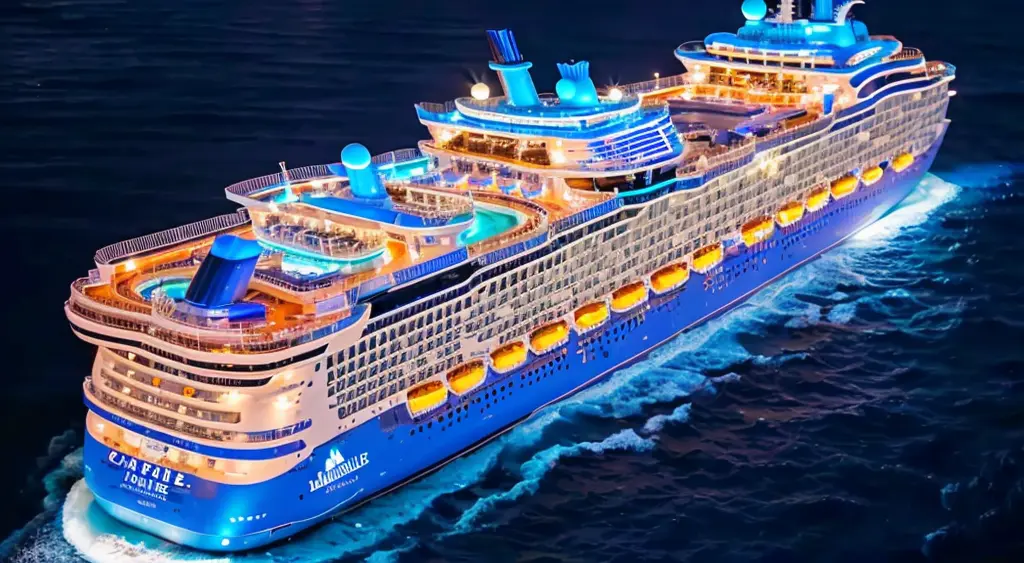
However, the cruise industry claims the actual figure is much higher, with passengers spending an average of $750 per person in port cities during a typical seven-day cruise, or about £85 per day. They also cite a global economic impact of $75 billion, supporting 848,000 jobs. While comparisons with swarming insects make headlines, these figures are worth considering.


